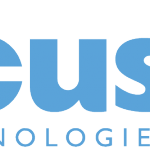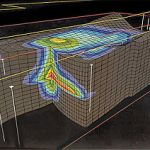Locus Technologies Discusses Brownfields’ Allure, The Business Journal
Ted Cuzzillo — Contributing Writer
Contaminated land is a scourge in many urban areas, but in the booming South Bay it’s often more than worth the trouble of cleaning it up.
“Demand is so huge,” said real estate broker John Troughten of Cushman Wakefield, “the contamination doesn’t even matter.”
These aren’t the highly contaminated Superfund sites but rather their less dangerous and more easily reused relatives called brownfields. While there are certain technical standards for a city or other government entity to declare a site a brownfield, the term also has wide informal use for any land with contamination that temporarily limits its usability.
Because they can more easily be put back into productive use, brownfields have prompted several state and federal programs to subsidize remediation and help define liability.
But in the booming Silicon Valley, simple economics usually obviate slow-moving government programs.
Changing Economics
The rule-of-thumb discount on land with a contamination stigma–whether formally designated or not–is 30 percent. That’s generally plenty to pay for remediation.
Perhaps more important, said Mr. Troughton, are rapidly appreciating values on land and the value of any development on it. While the cost of remediation and building remains almost the same, values are soaring. “The monstrous amount of profit that’s happening is because of super demand,” he said.
The growing scarcity of commercial land has forced sites that were once not even considered for development out onto the market, said Mr. Troughton. “It used to be that you could pick between two or three pieces of property, but now you’re lucky if you get one.”
Preparing a site for reuse is called remediation, not cleanup, since few sites are ever cleaned to their original states. Factors determining how clean “clean” is include pressure on site owners from their attorneys, technical consultants, regulatory agencies, the general public and their representatives, according to Michael Lane, a principal at Greenbrae Environmental in Marin County.
How it got that way
Brownfield remediation in the South Bay is generally easier than in San Francisco,
Emeryville or other areas around the bay with more varied industrial histories.
The bulk of Silicon Valley contamination can be traced to the 1950s and ’60s manufacture of semiconductors by such companies as Raytheon, Fairchild Semiconductor and GTE. They used a solvent known as trichloroethylene, commonly known as TCE and at the time believed to be nontoxic.
Toxic or not, it wasn’t supposed to escape the underground fiberglass vaults used to store it. Fortunately, TCE readily dissipates when exposed to air. Also, land can be used even as remediation continues — usually with the lowest possible profile.
“Brownfield in Silicon Valley is probably the best kept secret,” said Neno Duplancic, president and CEO of Locus Technologies.
And while they may not be as bad as Superfund sites, brownfields aren’t innocuous. Mr. Duplancic cites an article published this month in the New England Journal of Medicine (www.nejm.org) that says 80 to 90 percent of cancers are due to environmental exposure, not genetics (Unfortunately, this article has been removed).
“Yet in the past 15 years, the explosion of molecular genetics has overshadowed environmental explanations by revealing genetic mechanisms underlying cancer,” the article says. Mr. Duplancic called the research “a significant boost for environmental industry.”
Pump, scrub, or let it be
The Netscape Communications campus in Mountain View, cited by many as an example of successful reuse, employs ongoing remediation.
Machines continuously pump groundwater up and over activated charcoal within structures resembling 1950s-style science-fiction rockets. These “air scrubbers” reduce what are already unmeasurable levels of concentration with no evidence of risk to health, Mr. Duplancic said.
The process is analogous to rinsing detergent from a sponge. After many rinses, it still seems to have more in it.
Old gas stations were another source of contamination in the form of petroleum distillates. Like TCE, gasoline dissipates easily in the air. Another, newer technique is to use petroleum-eating microbes.
Builders can also help avoid the effects of remaining underground contamination. For example, instead of disturbing contaminants by hammering piles, some builders use a “spread” foundation — a concrete pad underneath the entire building — and vapor barriers to stop gases from leaking upward into the building, perhaps concentrating in a closet that’s opened only once or twice a year.
The new Microsoft campus on Torre Avenue in Cupertino used both techniques to remediate dangers from effects of leaks from an old paving company’s 20,000-gallon underground diesel tank.
A controversial new trend is “monitored natural attenuation,” said Mr. Lane. Contaminants are left in place and monitored at regular intervals.
The legal environment has evolved over the last few years. Historically, prospective land buyers feared being held liable even if they had no involvement in polluting.
“The liability hasn’t changed,” said Jim Hanson, the Region 9 brownfields coordinator at the U.S. Environmental Protection Agency in San Francisco. “but now there’s a lot of new policy and enforcement discretion.”
A new lender liability policy clarifies that unless a lender had some involvement in management of site, the EPA won’t consider it potentially liable. Also, when property sits above a contaminated aquifer but was not the source of pollution, the land owner will not be held responsible.
Other new tools include insurance that kicks in if property is remediated and then more contamination is found.
Are there more brownfields in the making? It’s a lot less likely today. In Mountain View, for example, pharmaceuticals is the only manufacturing industry now, said Michael Percy, principal planner for the city. And the controls are “a thousand times more strict” than in the past.
Ted Cuzzillo is a freelance writer based in Point Richmond. Contact him at
theodore@cannolo.com.
Copyright 2000 American City Business Journals Inc.
Click for permission to reprint (PRC# 1.1641.325135)



